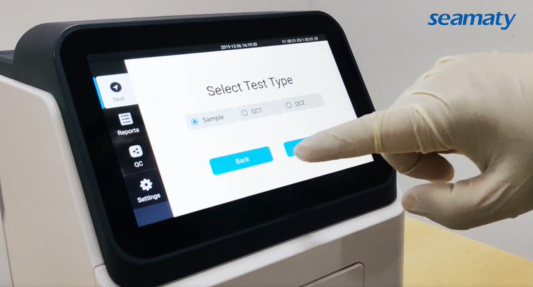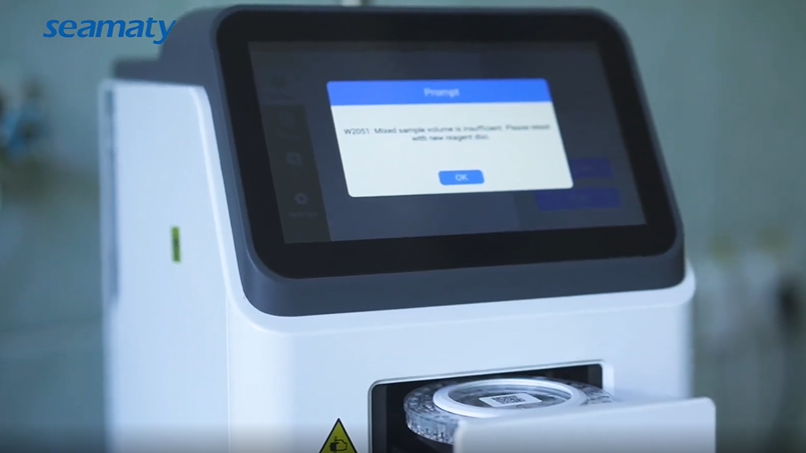This article lists some of the most compelling applications in the point of care testing (POCT) market. The point of care testing (POCT) industry aims to curb the global threat of disease under strict regulatory constraints. It is also expected to draw inspiration from numerous research projects. These projects are aimed at exploring detection and treatment methods for a wide range of diseases.
The
Point of care testing (POCT) market has evolved into its own business vertical and has become an integral part of modern healthcare. This is because it is improving the quality, availability, accuracy and affordability of high-end patient care across the globe. The design of Point of care testing (POCT) devices is rapidly evolving with more robust devices integrating the advanced technologies available in the market. The continued development of these complex devices has set the stage for unprecedented growth in the global POCT industry.
Manufacturers of
POCT devices continue to seek ways to cost-effectively design products that enhance user comfort. Recent years have seen the introduction of POCT devices that are constantly innovating for various disease types based on the medical community's growing understanding of the underlying causes of diseases such as cancer and other chronic diseases. Advances in technology have further helped healthcare professionals reduce wait times for tests and positively impact research programs, especially when multiple, disparate testing processes need to be optimized.
Technology enhancements and extensive research are changing the face of POCT adoption
01 Blood Glucose Testing
POCT technology has revolutionized diabetes care, opening up a range of effective ways to measure blood glucose in a frequent and timely manner. This can easily be done not only in clinics and hospitals, but also in the patient's home. According to the World Health Organization, to fully understand the importance and contribution of POCT technology in managing diabetes care, it is prudent to mention that the number of people with diabetes worldwide has increased from 108 million in 1980 to 422 million in 2014.
Considering the growing demand for advanced POCT devices and the need for universal and accurate diabetes management practices, key market players are introducing improved glucose monitoring devices to make the testing experience hassle-free and convenient.
For instance, healthcare giant Roche has launched Accu-Chek Guide, a glucose monitoring system that facilitates on-board mode testing through a mobile application. Given that the system is a cloud-based solution, healthcare providers, caregivers and diabetes patients can share glucose readings from virtually anywhere for remote monitoring and timely advice.
For example, Amazon has launched a new healthcare brand, Choice. it offers glucose meters, lancets and strips that reduce the hassle of visiting a pharmacy. The introduction of digitally connected glucose testing systems and easy access to these complex devices will drive growth prospects for the POCT industry in the coming years.
02 Cancer biomarker testing
Researchers are working to simplify the detection of cancer biomarkers in order to make a significant difference in the way healthcare providers diagnose cancer. The results of some studies are very encouraging and will revolutionize the POCT industry. For example, researchers at the University of Queensland recently discovered a unique cancer biomarker and developed a method to detect it in blood and biopsies. The new technology was tested on 200 human cancer samples and recorded cancer detection accuracies of up to 90 percent. This method has significant advantages over other cancer biomarker tests currently available in the POCT market.
03 HIV testing
The expansion of AIDS-related POCT testing in resource-limited countries can contribute to the 90-90-90 goal in achieving the Joint United Nations Programme against HIV/AIDS. Notably, the HIV-related POCT approach increases the coverage of testing and extends the reach of the technology beyond urban centers to rural populations.
In 2015, the World Health Organization (WHO) published a manual entitled "Improving the Quality of AIDS-Related Point-of-Care Testing," which noted that AIDS-related POCT testing was implemented on a large scale in 2013, with 23% of CD4 tests performed using these technologies. In 124 low- and middle-income countries, more than 118 million people have been tested for HIV.
With ambitious disease prevention goals and the growth of POCT testing, the development of advanced HIV testing solutions that can deliver accurate results quickly is a critical need. With this in mind, several prominent POCT manufacturers are introducing new devices and methods that can deliver results faster. For example, Abbott has launched a new POC test in the Netherlands called m-PIMA HIV-1/2 VL, which allows screening and treatment in a single follow-up visit because it provides results in 70 minutes.
Since viral load testing is considered the standard for monitoring ART treatment failure, this new test is purportedly the first to detect viral load using POCT. It is considered critical that POCT industry participants conduct this exemplary test. This is because the World Health Organization recommends that every individual on ART must be tested for viral load at 6-month intervals and at 12-month intervals.
In addition to rapid technological advances and research activities, regulatory agencies governing medical diagnostics and overall healthcare in various countries are increasingly promoting the use of cost-effective and easily accessible POCT devices, especially in areas that are out of reach of central laboratory services.
Below are a few notable examples that highlight the efforts of regional regulators to promote POCT technology.
NHS England, considered one of the most effective health services in the world, launched a three-month consultation and guidance that called on GPs to prescribe cheaper alternatives to blood glucose test strips for patients with type 2 diabetes.
To improve the performance and safety of POCT devices, the FDA reissued two draft guidance documents in 2018 to help manufacturers conduct performance studies of glucose monitoring test systems for POCT testing purposes.
Understanding localized gaps in test coverage and the need for POCT devices in terms of disease prevalence and access is critical to achieving universal healthcare goals. Considering the cumulative impact of cloud-based POCT solutions and the enhancement of existing quality assurance and quality improvement practices, the use of POCT devices will increase in the next few years in more advanced health and laboratory settings in developed and emerging economies.



